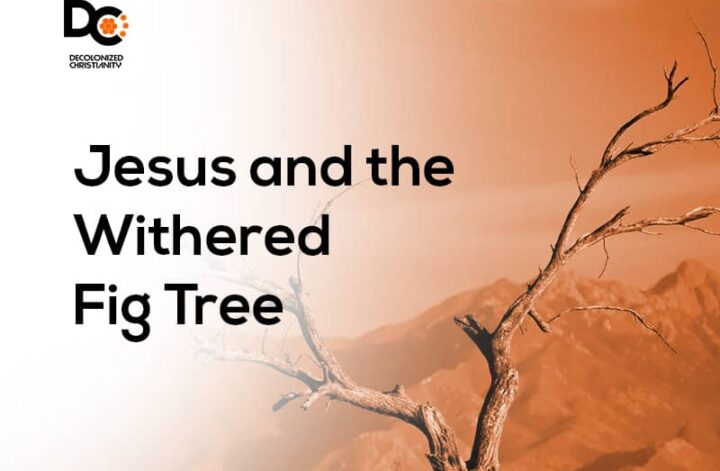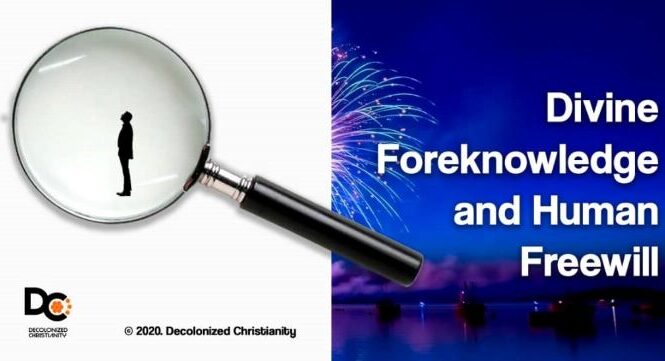We have considered three views along the spectrum of differing Christian positions on this subject. We saw how the typical Calvinist might argue her case. But since the Calvinist’s case rests on hotly debated presuppositions, I am not convinced that Calvinism handles the data well. John Lennox’s view represents a non-Calvinist approach to defending the eternal security of believers. Relying on the high priesthood of Jesus and his will to keep everyone who comes to him, Lennox reasons that the people of Hebrews 6:4-6 cannot be Christians. It is important to stress that both positions recognize that the issue at stake is not just any sin; everyone agrees believers will continue to have issues with sins—even if they get better day by day. The issue at stake is apostasy—the sin of willfully and finally rejecting Jesus and his salvific work.
Can a Believer Lose Her Salvation? An Arminian View (Series Part 3)
The two views that we have considered so far have some things in common. They both affirm that the people described in the Hebrews passage are not believers, and true believers will persevere to the end. The biggest challenge to this view is the problem of the other “warning passages” of Hebrews. It is difficult to read the book of Hebrews by itself and not wrestle with questions that would point away from the conclusions of the views already explored. Hence, in this installment, we will focus on understanding Hebrews 6:4-6 purely within the narrative world of the book.
Can a Believer Lose Her Salvation? A Middling Approach (Series Part 2)
In the first part of this series, we considered Calvinism’s handling of the passage under investigation. In this second part, we will explore a non-Calvinistic approach to exegeting Hebrews 6:4-6 that generates similar results as Calvinism does. John Lennox, an Oxford mathematician and philosopher, exemplifies this middling alternative in his Determined to Believe? Rather than relying on hotly debated ideas such as unconditional election and limited atonement, this approach premises the perseverance of the saints on Jesus’ assurance and his eternal high priesthood. John 6:38–39 says,
Can a Believer Lose Her Salvation? A Calvinistic View (Series Part 1)
Background
Hebrews is a rather interesting book. While it does not have the rather complex (and the often deliberate, author-induced) convolutions of the book of Revelation, it can be a mind-bending work for exegetes. For starters, it is a forgone conclusion now that we may never know the author of Hebrews. Yet, we know that whatever the author’s identity may be, he was a highly educated individual, a fact evinced by the sophistication in his Greek and style.
The Pan-national House of Prayer (Series Part 5, Finale)
Say to this mountain
Let us review what we know about the narrative content of Mark 11. The author sets up the chapter with Jesus’ Messianic entry into Jerusalem. This procession ends in a quite underwhelming manner as Jesus entered the temple late in the evening to observe the operations of the temple. As Brown puts it, the closure “is a surprisingly pedestrian finale to Jesus’ messianic action of riding up to Jerusalem on a colt in symbolic fulfillment of Zech 9:9” (82). Before Jesus would have another chance in the temple, he cursed a non-defective tree en route. In the temple, Jesus disturbed the typical daily operations by overturning tables and restricting movement in some parts of the temple. While doing all this, he alluded to two major Old Testament prophets. Later on the same day, Jesus left the city, and the disciples noticed that the cursed fig tree had withered. In reply, Jesus says (11:22-25):
The Centrality of Isaiah 56 and Jeremiah 7 (Series Part 4)
The work of Esther Miquel with which we have extensively interacted already explained much of Mark 11, but there yet remains some knotty portions of Mark 11 requiring text-faithful explanations. In his contribution to the issue, J.R.D Kirk stresses the importance of bringing the full context of Markan Jesus’ Old Testament allusions to bear on one’s reading of Mark 11. While aggressively disturbing the typical temple operations, Jesus taught the audience by combining two references from the Hebrew Bible when he said, “Is it not written: ‘My house will be called a house of prayer for all nations’? But you have made it ‘a den of robbers’” (Mark 11:17). The referenced Old Testament passages are Isaiah 56:7 and Jeremiah 7:11. Kirk warns against reading these citations in isolation from their respective broader contexts. Instead, he argues that if one reads those citations of Jesus as a Tanakh-literate first century Jew would have done, one could understand the portions of Mark 11 that seem problematic.
The Fig Tree, Judaism, and the Temple (Series Part 3)
Second Fig Tree Encounter
As mentioned earlier, Esther Miquel believes that Jesus was so infuriated with how he found the affairs of the temple that he wanted it to cease to exist. Following Jesus’ evening trip to the temple (Mark 11:11), he cursed a fig tree on the next morning for not being productive. Later, when Peter points out to Jesus that the tree has withered, Mark seems to depict Jesus as explaining the phenomenon as an answer to a prayer (Mark 11:20-25), the prayer being the pronouncement, “May no-one ever eat fruit from you again.” That Jesus directed this curse-prayer against the temple and its leadership is clarified by his invitation to his audience to have a similar faith in God: “Truly I tell you, if anyone says to this mountain, ‘Go, throw yourself into the sea,’ and does not doubt in their heart but believes that what they say will happen, it will be done for them” (24; emphasis added). The demonstrative, this, is literally referring to the mountain on which the temple was situated. In other words, this Markan prayer is specifically about the destruction of the temple, and not a universal formula for Christians to ask whatever they want from God. Miquel is worth quoting in some detail (149):
Problems with the Fig Tree Story (Series Part 2)
The First Fig Tree Encounter
Having demonstrated that the Gospel of Mark (and all bible books) is a piece of intelligent writing involving careful human writer decisions featuring some literary techniques of the day, we are now ready to wrestle with some issues with the fig tree story.
Here is Mark 11:11-14,
Jesus entered Jerusalem and went into the temple courts. He looked around at everything, but since it was already late, he went out to Bethany with the Twelve. The next day, as they were leaving Bethany, Jesus was hungry. Seeing in the distance a fig tree in leaf, he went to find out if it had any fruit. When he reached it, he found nothing but leaves, because it was not the season for figs. Then he said to the tree, “May no one ever eat fruit from you again.” And his disciples heard him say it.
This portion is the first half of the fig tree story since Mark inserts the story of Jesus’ aggressive act in the temple into the narrative beginning from the next verse. Mark prepares the readers for an intercalation with the words, “And his disciples heard it” (11:14; emphasis added). He resumes the fig tree story with these words, “In the morning, as they went along, they saw the fig tree withered from the roots. Peter remembered…” (11:20-21; emphasis added).
Mark’s Gospel & Sandwiches (Series Part 1)
Introduction
We modern readers tend to read the gospel books as pure history. But the authors typically explicitly tell their immediate readers the goal for writing, and this goal often is not about writing a history of Jesus and his deeds. Except for Luke, which claims to provide an “orderly account” (Luke 1:3) of the life and acts of Jesus, no other gospel book comes close to laying claim to being primarily an exercise in history-writing. John says that Jesus did other things which he did not include in his gospel account for reasons he did not tell us, but then adds that the portions he included were chosen so that his First-Century readers may “believe that Jesus is the messiah” (John 20:30-31). Thus, it would seem like John was more interested in doing apologetics than merely retelling the deeds of Jesus. Precisely because these authors were often not merely interested in history-writing, they often took the liberty to transpose units of stories as they saw fit for their literary goals. For instance, an attentive reader would be quick to recognize some minor variations in the withered fig tree story as told by Matthew and Mark (John and Luke do not mention the story). I should add, this literary practice was not unique to the Gospel writers. This was a common and acceptable practice of the time.
What Does Paul Really Teach in Romans 9:22-32? (Series Part 13, Finale)
Romans 9:22 is a reference to Pharaoh: “What if God, although choosing to show his wrath and make his power known, bore with great patience the objects of his wrath—prepared for destruction?” When one reads the account in Exodus, one sees that Pharaoh had several opportunities to release God’s people. Repeatedly, Pharaoh hardens his heart. God slowly increased the punishment on Egypt, bringing on ten plagues on the land (and against specific Egyptian gods) and each time warning Pharaoh beforehand of the consequences of his arrogance. Eventually, having gone past the point of return, God hardens Pharaoh’s heart to prepare for destruction. We stress that Pharaoh had opportunities to change his mind, and had he done so, the outcome would be different for him. Paul, nevertheless, seems to have dulled the distinction in the original narrative as he stresses the outcome of a hardened heart. It is tempting to read “prepared for destruction” and “prepared for glory” fatalistically.






